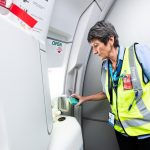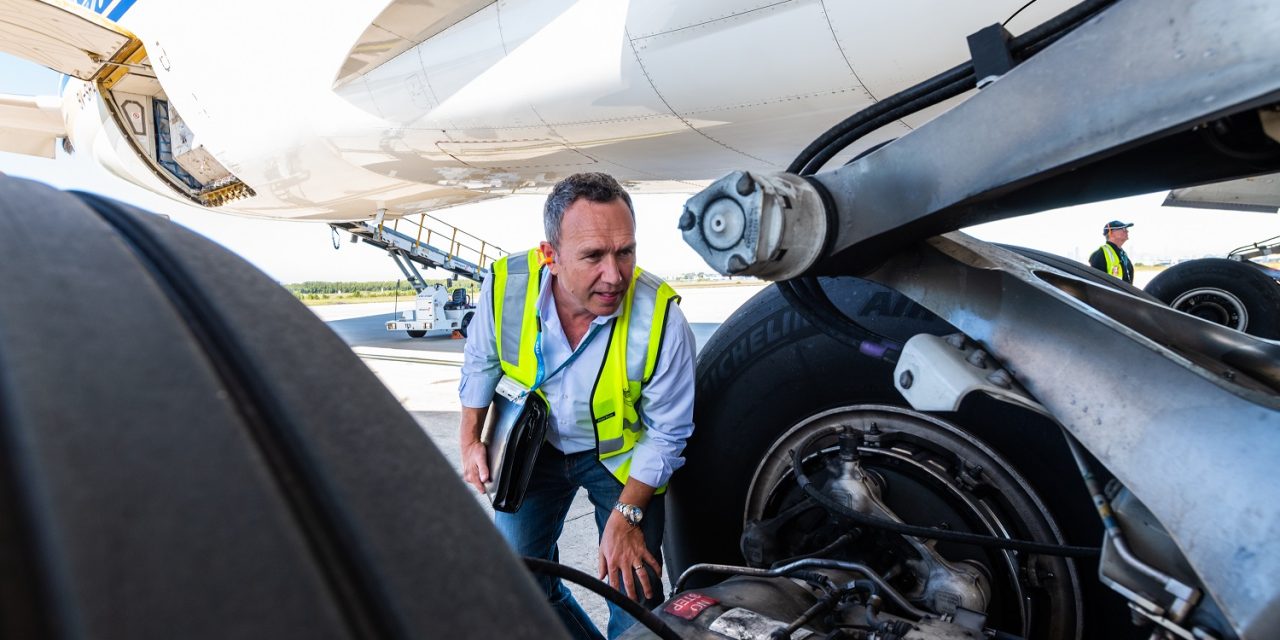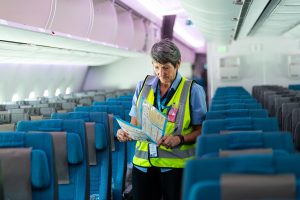 ‘We conduct ramp inspections on foreign operators deploying throughout Australia to ensure they meet the international standards and subsequently the travelling public can be confident the airlines they travel on are safe,’’ said CASA International Operations Manager Grant Hamilton.
‘We conduct ramp inspections on foreign operators deploying throughout Australia to ensure they meet the international standards and subsequently the travelling public can be confident the airlines they travel on are safe,’’ said CASA International Operations Manager Grant Hamilton.
‘Generally, we have two inspectors on a ramp check – a flying operations inspector and an airworthiness inspector – and, when resources allow, we also have a cabin safety inspector.
Unannounced ramp inspections are part of those systems and involve checks of aircraft, airline crew and documentation to ensure they meet international standards.
‘At the end of the inspection, members of the ramp inspection team collate their findings and discuss the safety impact if there are any issues.’
‘With category one, it’s more about awareness if there’s an issue that we perceive may impact safety at some point,’ he said. The inspectors conduct random ramp checks to ensure foreign registered aircraft and crew meet global and Australian safety requirements.
Inspectors interview the incoming flight and cabin crew and the engineers involved in the operation while the aircraft is on the ground.
‘With a category three finding, we can potentially ground the aircraft or restrict its operations somehow on their flight out of Australia.’
Their inspection includes an examination of aircraft, flight and cabin crew documentation.
Civil Aviation Safety Authority inspectors are working hard to ensure Australian travellers enjoy the high safety standards they expect as international airlines return to the nation’s airports.
CASA’s International Operations team employs five inspectors who perform about 130 inspections a year.
‘When we’re in the cabin, we’re looking at safety equipment.
Operators who consistently fail to meet standards can ultimately be placed on the European Union’s Air Safety List and banned from flying to the EU.
‘This ensures we can get on and off the aircraft appropriately and don’t delay the aircraft.
‘We’re looking to make sure there’s no loose carpet, and nothing’s broken in the cabin,’’ said CASA International Safety Inspector Allison Ingham.
Air travel remains the safest form of travel, and passengers generally have more risk of being struck by lightning than being involved in a major accident involving a jet airliner.
Safety information is shared between participating states, and inspection results are entered into a centralised database.
They inspect aircraft at major gateway airports such as Sydney, Melbourne, Perth and Brisbane, and international destinations such as the Gold Coast, Cairns, Darwin and Canberra. A cabin safety check ranges from safety cards to crew seating, seat belts and the pressure in escape slides.
‘Category two is a bit more serious where we will advise their national regulator that we have concerns with this operator.
Hamilton said any findings were rated according to three categories. The CASA manager said airlines and their crews understood the value of ramp checks and their contribution to safety. The inspections are part of a global system involving 51 countries and coordinated by the European Union Aviation Safety Agency (EASA).
Approximately 70 inspections on 48 airlines from 27 countries have already been undertaken this year.
Written by: Jill Walsh


















